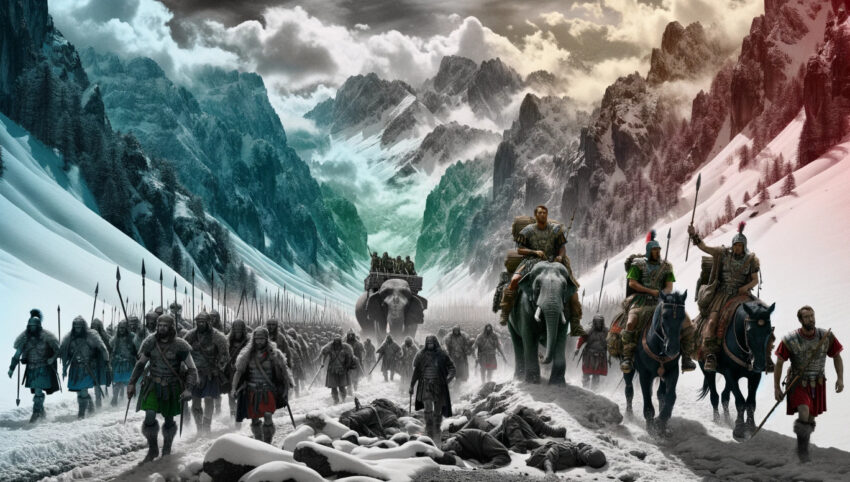The Second Punic War, a pivotal chapter in the annals of ancient warfare, unfolded over 17 grueling years, from 218 to 201 BCE. This epic conflict between Rome and Carthage was ignited by the ambitions of the formidable Carthaginian general, Hannibal Barca. His audacious crossing of the Alps with war elephants and a massive army marked the beginning of a series of battles on Italian soil, putting the Roman Republic to its sternest test. Hannibal’s military genius shone at battles like Cannae, where his tactical ingenuity led to one of the most crushing defeats in Roman history. Yet, despite these victories, his inability to secure enough reinforcements from Carthage or to sufficiently break the alliances of Rome with other Italian states gradually diminished his advantages.
The tide of war turned with the emergence of a Roman general of equal renown, Scipio Africanus. Learning from the failures of his predecessors, Scipio adopted a bold strategy of taking the fight directly to the Carthaginian territories. His campaigns in Spain cut off Carthage’s supply lines and resources, while his subsequent invasion of North Africa forced Hannibal to return to defend his homeland. The climactic Battle of Zama, where Scipio faced Hannibal in a direct confrontation, ended in a decisive victory for Rome. This battle not only marked the end of the Second Punic War but also heralded the rise of Rome as a dominant power in the Mediterranean. Scipio’s strategic brilliance and the resilience of Rome reshaped the political landscape of the ancient world, setting the stage for an era of Roman expansion and influence.
 |
 |

